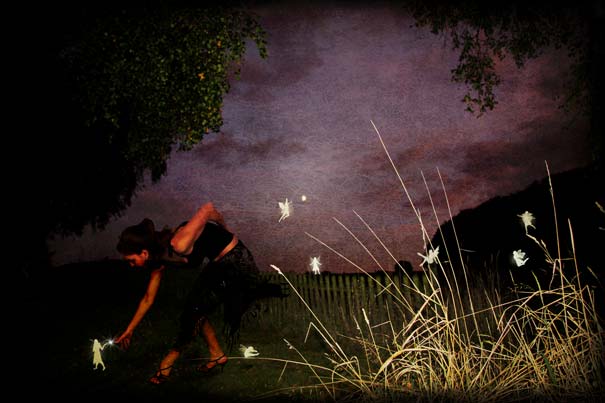Dreaming is one of the most mysterious and interesting experiences in our lives. [via boredpanda]
During the Roman Era, some dreams were even submitted to the Roman Senate for analysis and dream interpretation. They were thought to be messages from the gods. Dream interpreters even accompanied military leaders into battles and campaigns!
In addition to this, it is also known, that many artists have received their creative ideas from their dreams.
But what do we actually know about dreams?
Here are 15 interesting facts about dreams – enjoy, and what’s most important, don’t forget to share your dream stories in the comment section!
1. You Forget 90% of Your Dreams
Within 5 minutes of waking, half of your dream is forgotten. Within 10, 90% is gone.

2. Blind People also Dream
People who became blind after birth can see images in their dreams. People who are born blind do not see any images, but have dreams equally vivid involving their other senses of sound, smell, touch and emotion.

3. Everybody Dreams
Every human being dreams (except in cases of extreme psychological disorder). If you think, you are not dreaming, you just forget your dreams.

4. In Our Dreams We Only See Faces, That We already Know
Our mind is not inventing faces – in our dreams we see real faces of real people that we have seen during our life but may not know or remember. We have all seen hundreds of thousands of faces throughout our lives, so we have an endless supply of characters for our brain to utilize during our dreams.

5. Not Everybody Dreams in Color
A full 12% of sighted people dream exclusively in black and white. The remaining number dream in full color. Studies from 1915 through to the 1950s maintained that the majority of dreams were in black and white, but these results began to change in the 1960s. Today, only 4.4% of the dreams of under-25 year-olds are in black and white. Recent research has suggested that those changing results may be linked to the switch from black-and-white film and TV to color media.

6. Dreams are Symbolic
If you dream about some particular subject it is not often that the dream is about that. Dreams speak in a deeply symbolic language. Whatever symbol your dream picks on it is most unlikely to be a symbol for itself.

(bamboo for h.koppdelaney)
7. Emotions
The most common emotion experienced in dreams is anxiety. Negative emotions are more common than positive ones.

8. You can have four to seven dreams in one night.
On average, you can dream anywhere from one or two hours every night.

9. Animals Dream Too
Studies have been done on many different animals, and they all show the same brain waves during dreaming sleep as humans. Watch a dog sleeping sometime. The paws move like they are running and they make yipping sounds as if they are chasing something in a dream.

10. Body Paralysis
Rapid eye movement (REM) sleep is a normal stage of sleep characterized by rapid movements of the eyes. REM sleep in adult humans typically occupies 20-25% of total sleep, about 90-120 minutes of a night’s sleep.
During REM sleep the body is paralyzed by a mechanism in the brain in order to prevent the movements which occur in the dream from causing the physical body to move. However, it is possible for this mechanism to be triggered before, during, or after normal sleep while the brain awakens.

11. Dream Incorporation
Our mind interprets the external stimuli that our senses are bombarded with when we are asleep and make them a part of our dreams. This means that sometimes, in our dreams, we hear a sound from reality and incorporate it in a way. For example you may be dreaming that you are in a concert, while your brother is playing a guitar during your sleep.

12. Men and Women Dream Differently
Men tend to dream more about other men. Around 70% of the characters in a man’s dream are other men. On the other hand, a woman’s dream contains almost an equal number of men and women. Aside from that, men generally have more aggressive emotions in their dreams than the female lot.

13. Precognitive Dreams
Results of several surveys across large population sets indicate that between 18% and 38% of people have experienced at least one precognitive dream and 70% have experienced déjà vu. The percentage of persons that believe precognitive dreaming is possible is even higher, ranging from 63% to 98%.

*Precognition, also called future sight, refers to perception that involves the acquisition of future information that cannot be deduced from presently available and normally acquired sense-based information.
14. If you are snoring, then you cannot be dreaming.
This fact is repeated all over the Internet, but I’m a bit suspicious whether it’s really true as I haven’t found any scientific evidence to support it.

15.You can experience an o r g asm in your dream
You can not only have s e x as pleasurable as in your real life while dreaming, but also experience an o r g a s m as strong as a real one, without any wet results. The sensations felt while lucid dreaming (touch, pleasure and etc..) can be as pleasurable and strong (or I believe even stronger) as the sensations experienced in the real world.

Well, I hope you had a great time reading these strange facts about our dreams. Good night and sweet dreams! (I’m going to my bed to check those facts once again.)
P.S.: don’t forget to share your weirdest dream experiences below!
Did you like this post? Leave your comments below!Found this Post interesting? Receive new posts via RSS (What is RSS?) or Subscribe to CR by Email



